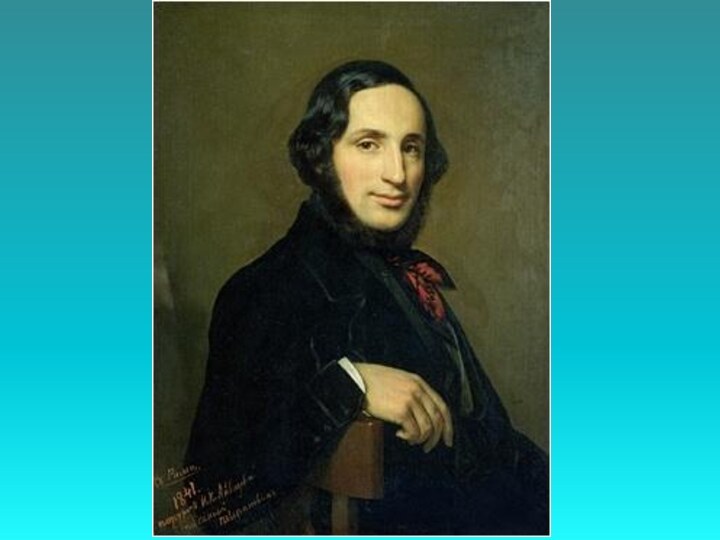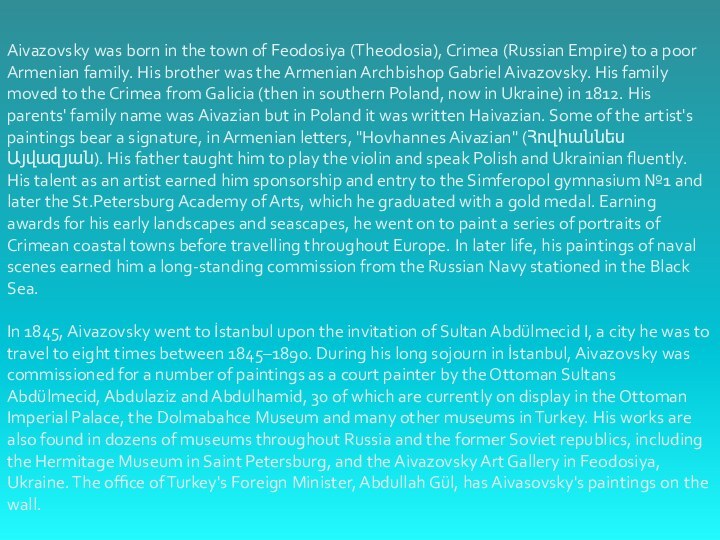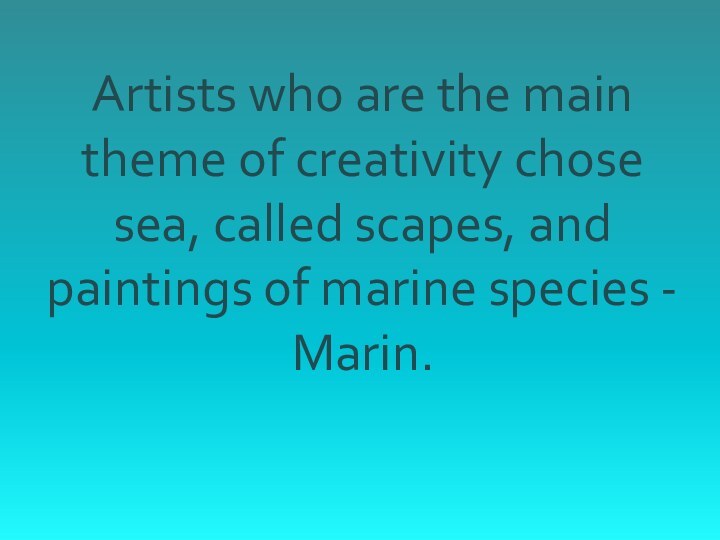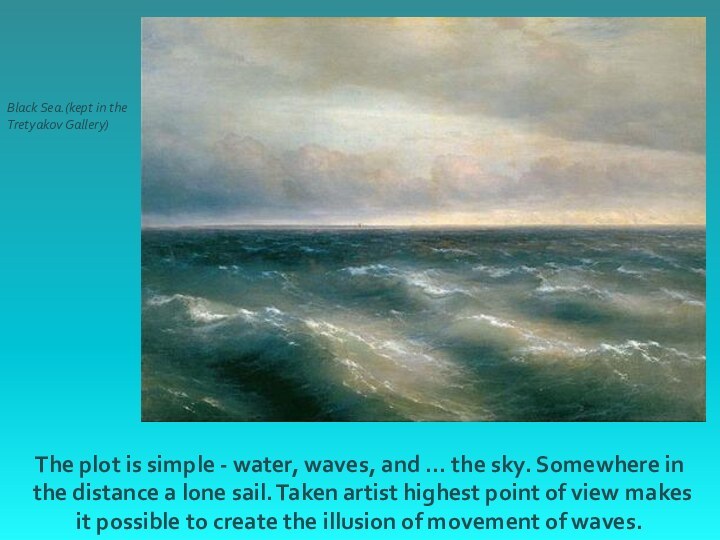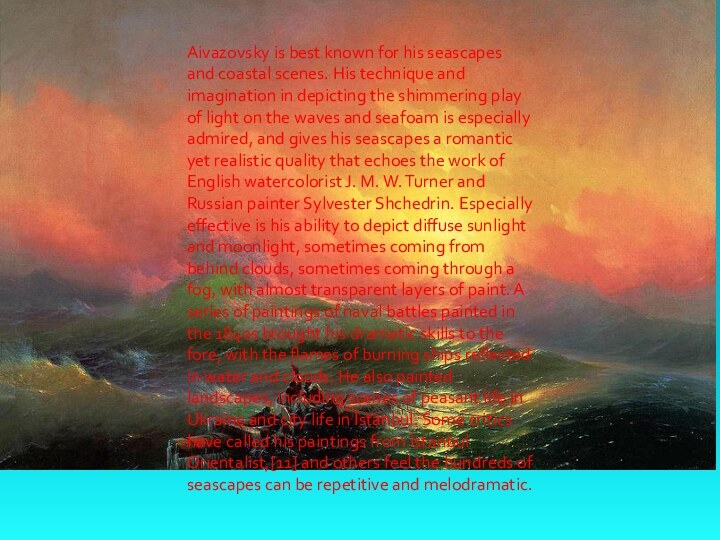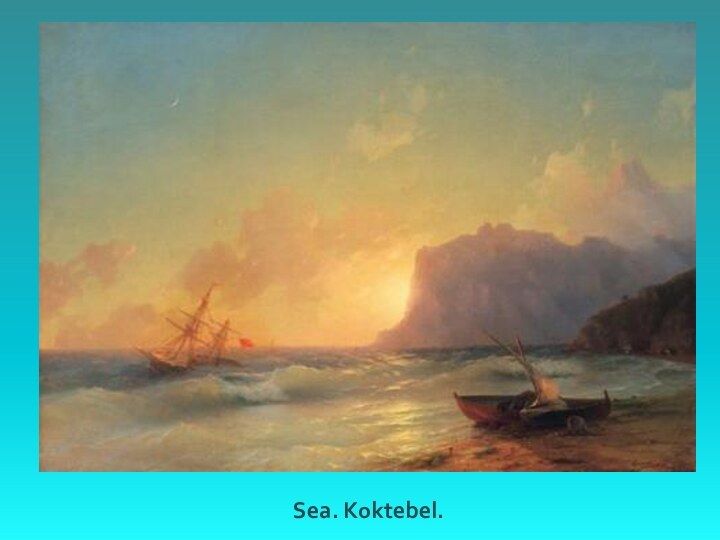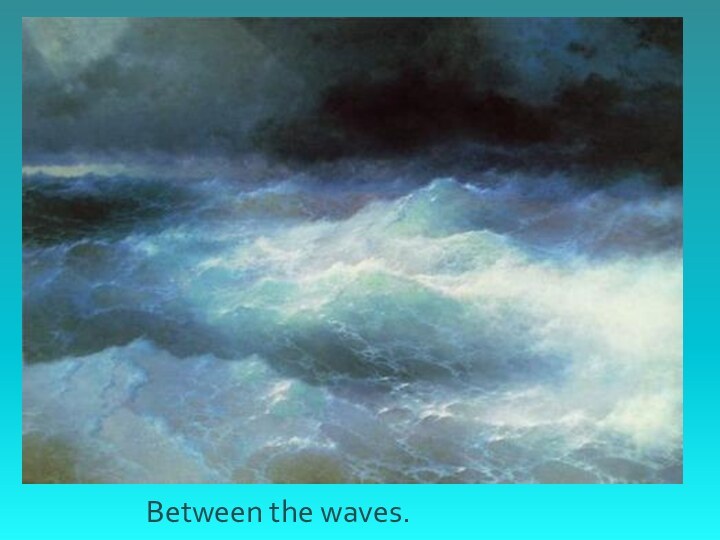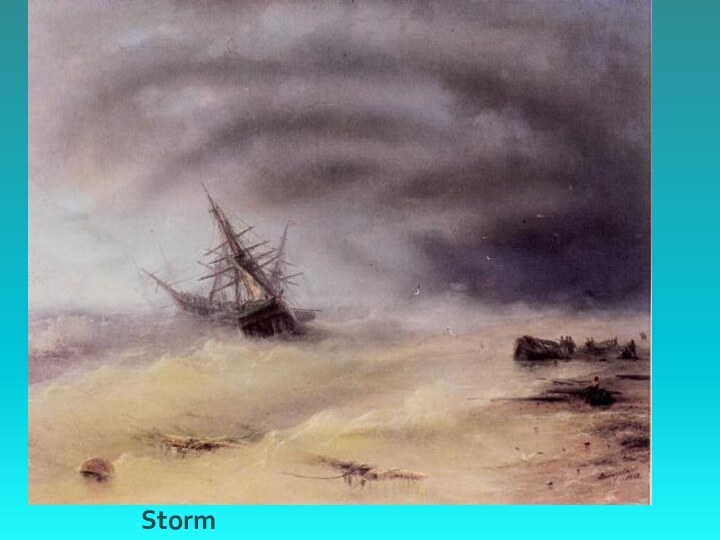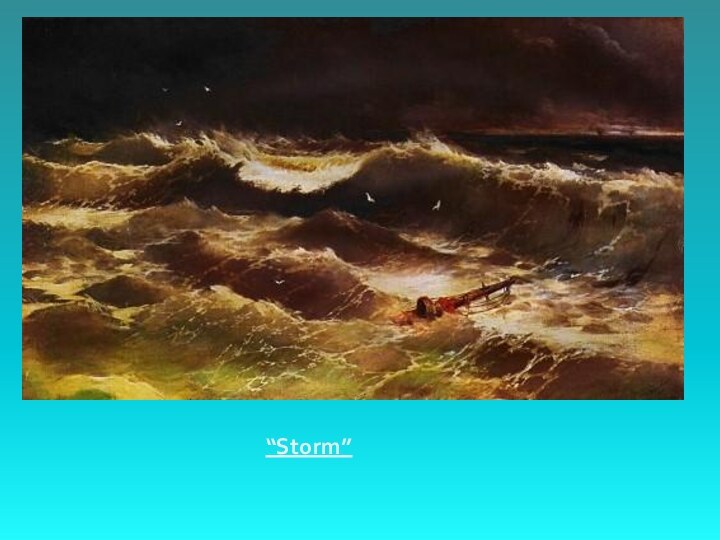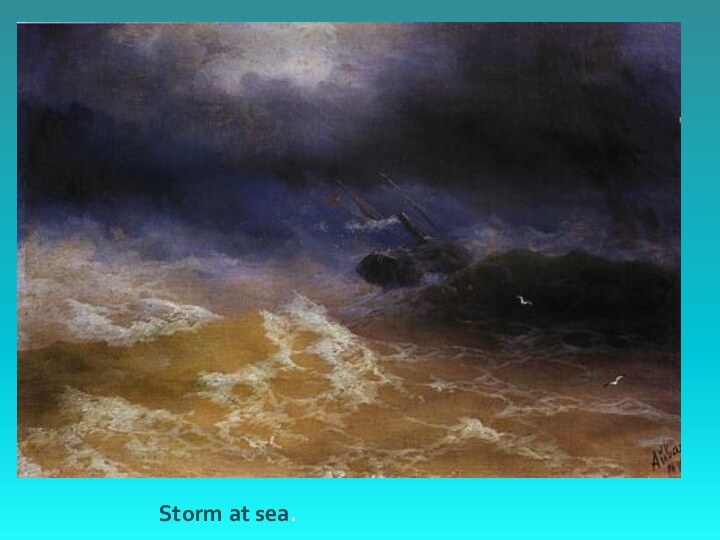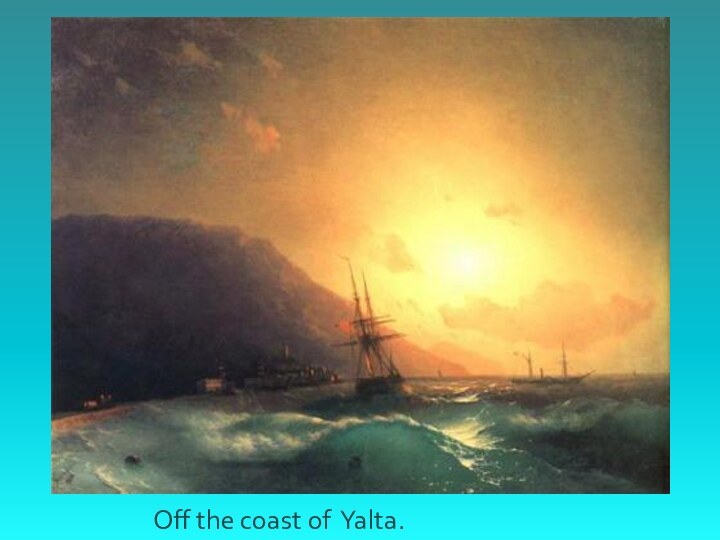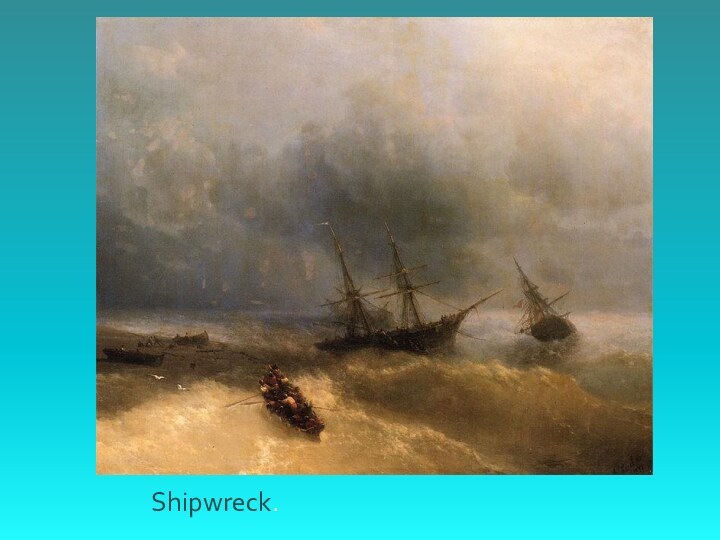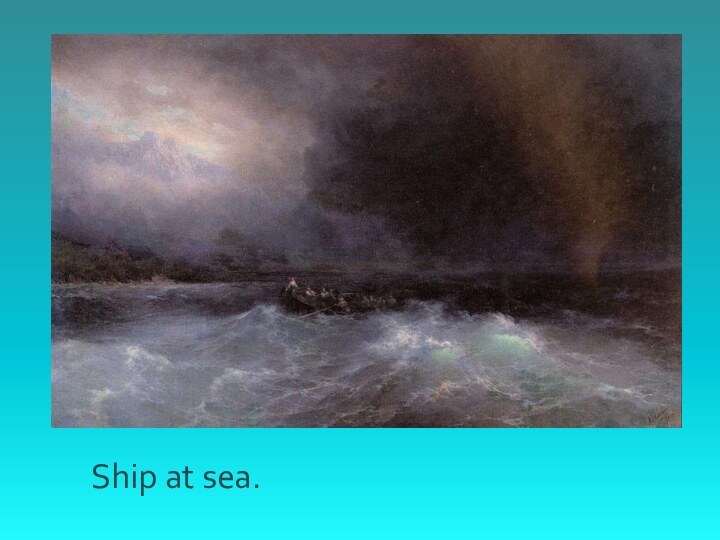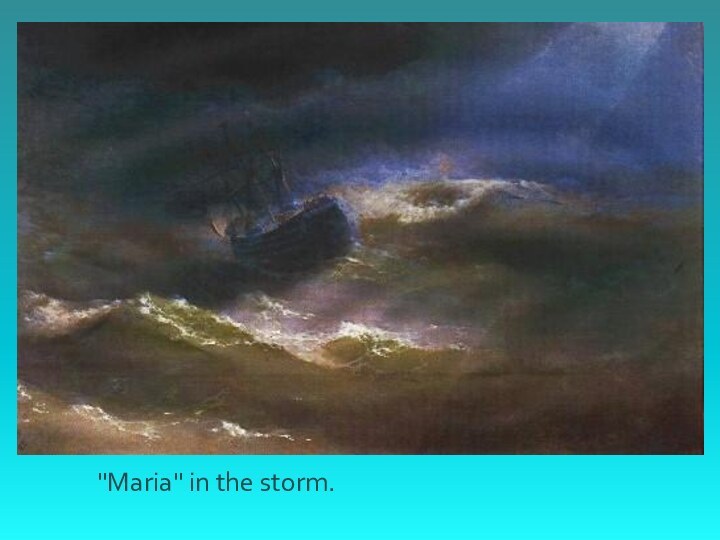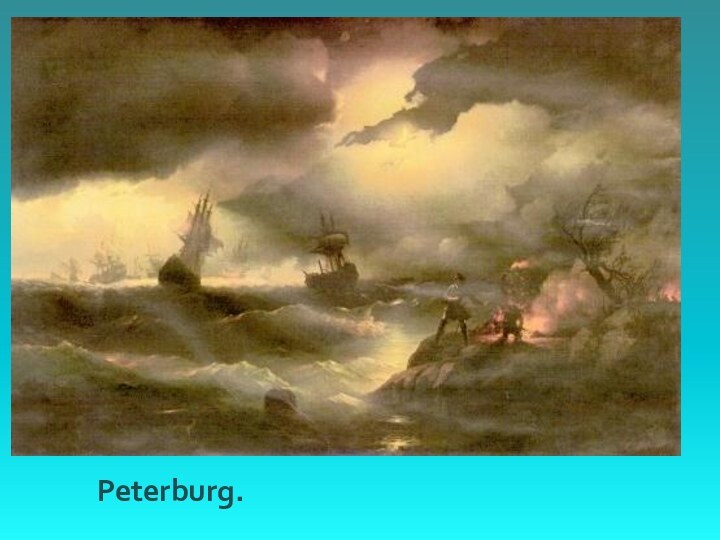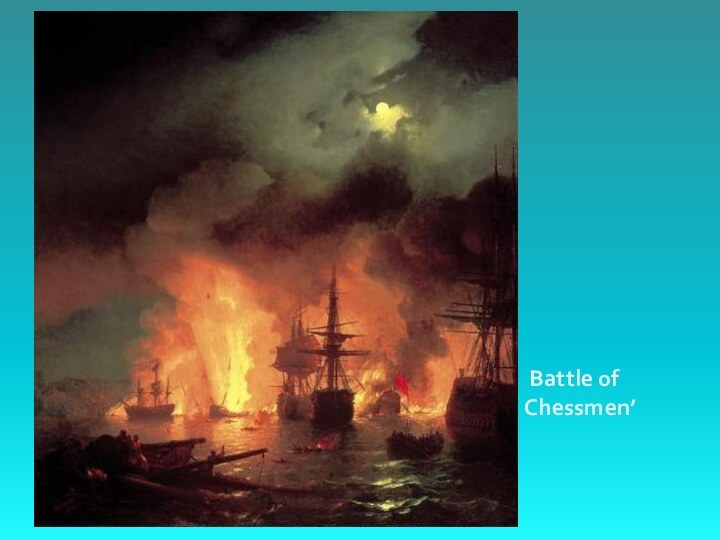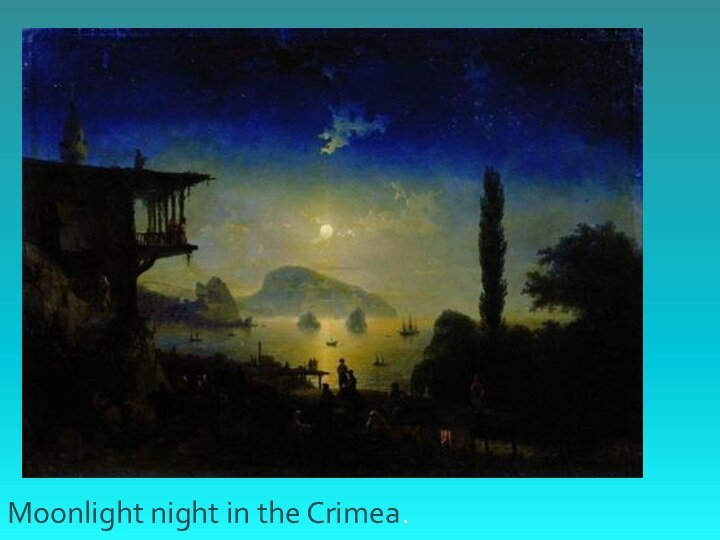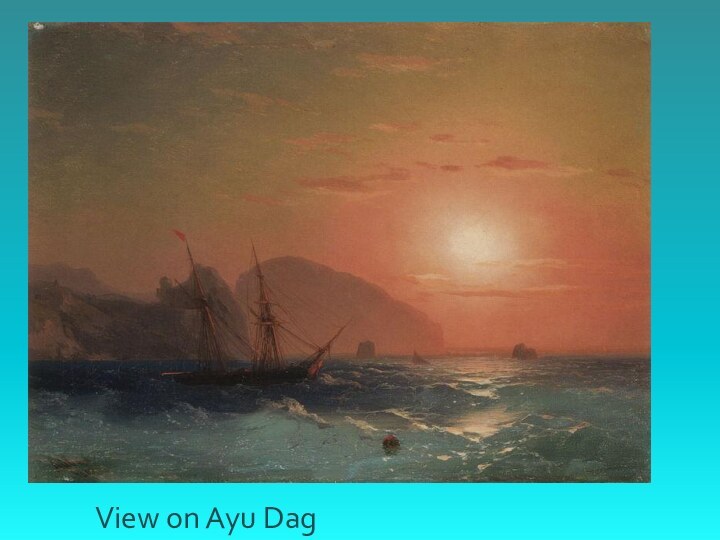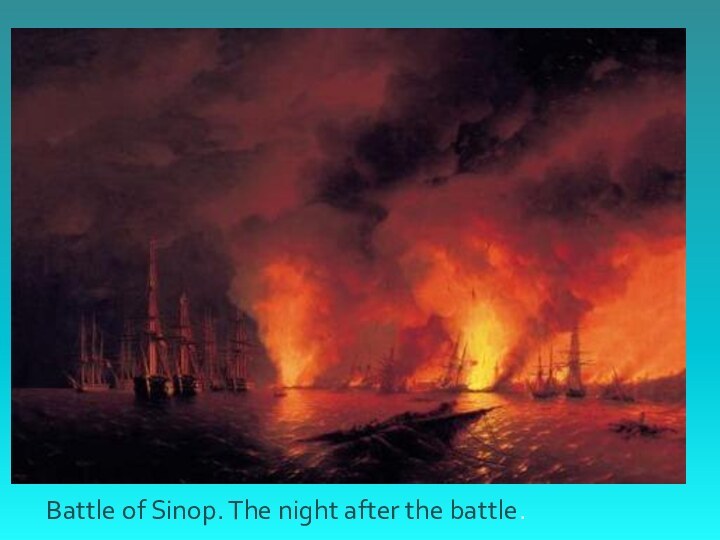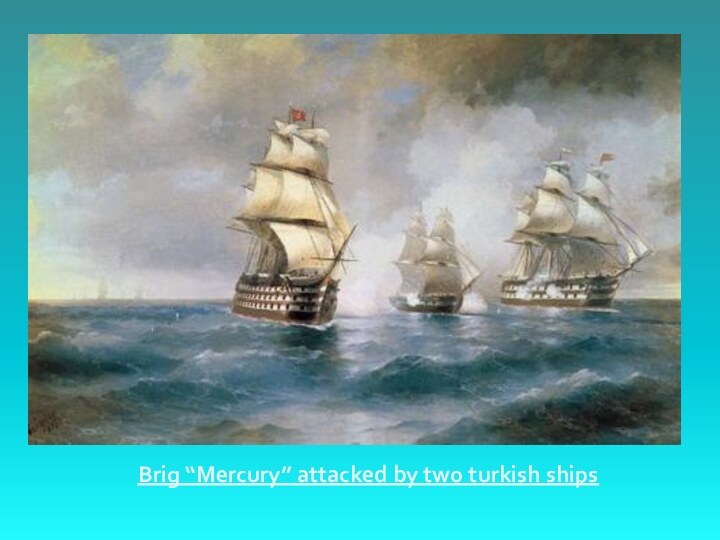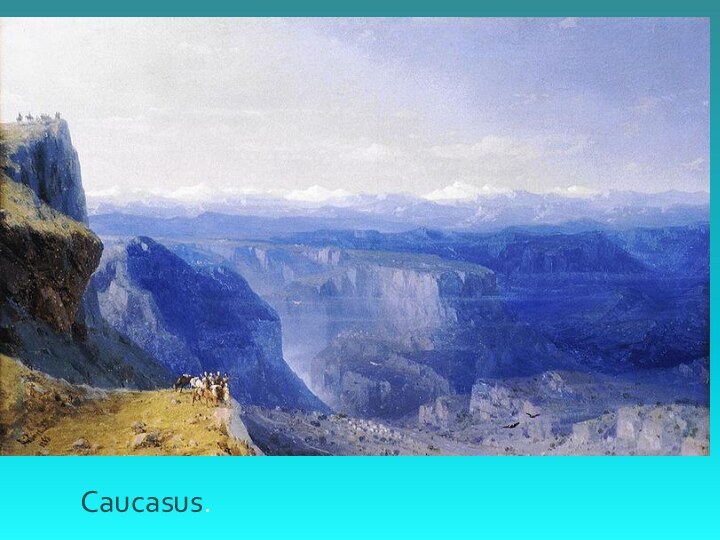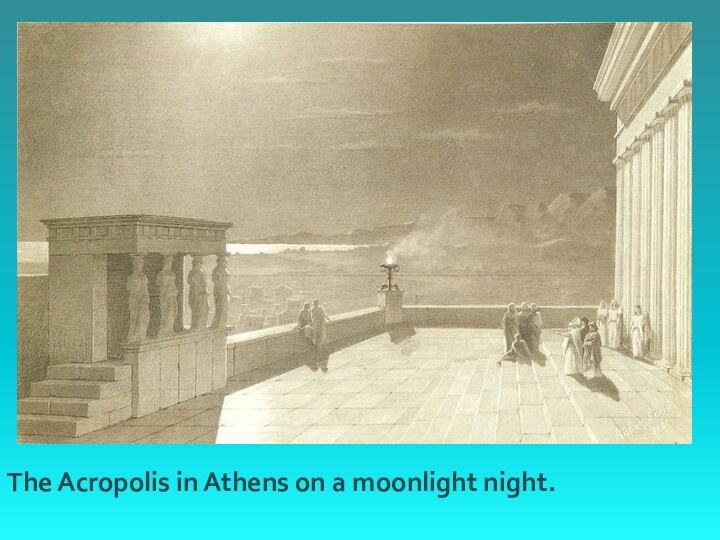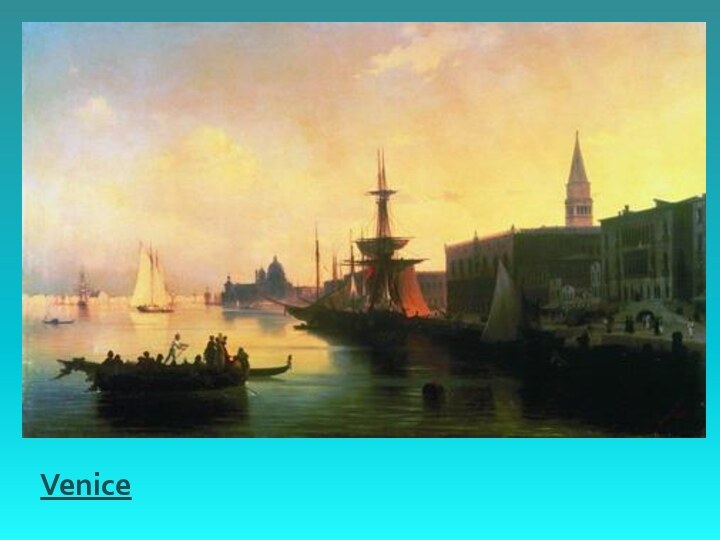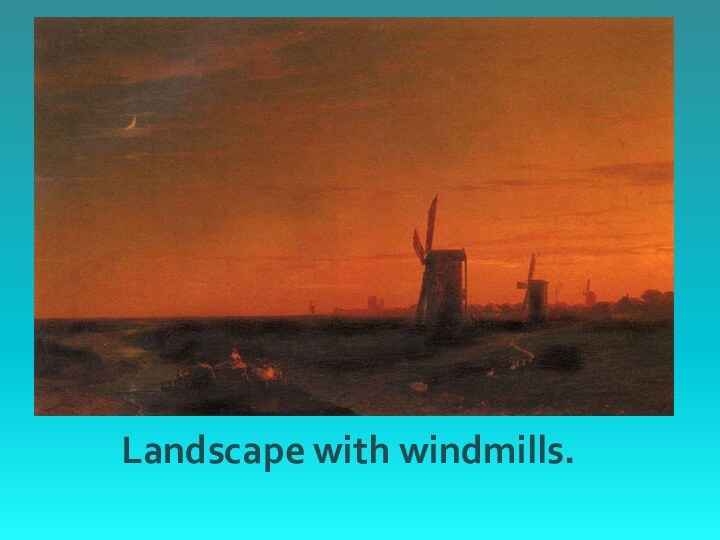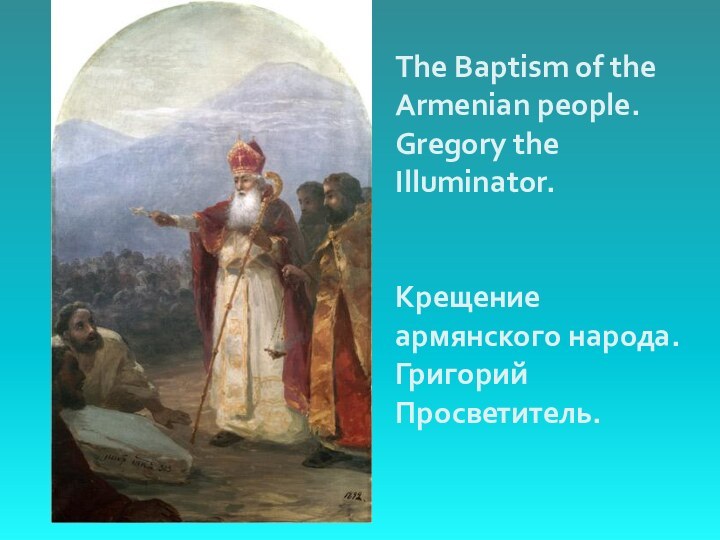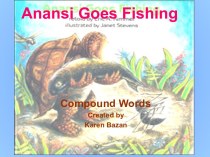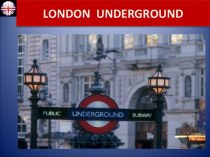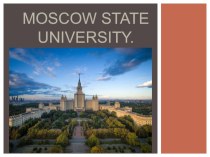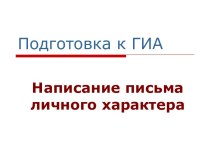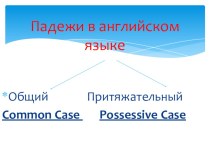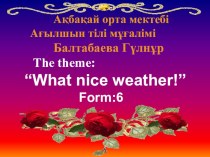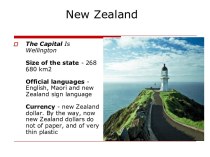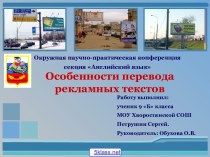(Theodosia), Crimea (Russian Empire) to a poor Armenian family.
His brother was the Armenian Archbishop Gabriel Aivazovsky. His family moved to the Crimea from Galicia (then in southern Poland, now in Ukraine) in 1812. His parents' family name was Aivazian but in Poland it was written Haivazian. Some of the artist's paintings bear a signature, in Armenian letters, "Hovhannes Aivazian" (Հովհաննես Այվազյան). His father taught him to play the violin and speak Polish and Ukrainian fluently. His talent as an artist earned him sponsorship and entry to the Simferopol gymnasium №1 and later the St.Petersburg Academy of Arts, which he graduated with a gold medal. Earning awards for his early landscapes and seascapes, he went on to paint a series of portraits of Crimean coastal towns before travelling throughout Europe. In later life, his paintings of naval scenes earned him a long-standing commission from the Russian Navy stationed in the Black Sea.In 1845, Aivazovsky went to İstanbul upon the invitation of Sultan Abdülmecid I, a city he was to travel to eight times between 1845–1890. During his long sojourn in İstanbul, Aivazovsky was commissioned for a number of paintings as a court painter by the Ottoman Sultans Abdülmecid, Abdulaziz and Abdulhamid, 30 of which are currently on display in the Ottoman Imperial Palace, the Dolmabahce Museum and many other museums in Turkey. His works are also found in dozens of museums throughout Russia and the former Soviet republics, including the Hermitage Museum in Saint Petersburg, and the Aivazovsky Art Gallery in Feodosiya, Ukraine. The office of Turkey's Foreign Minister, Abdullah Gül, has Aivasovsky's paintings on the wall.

